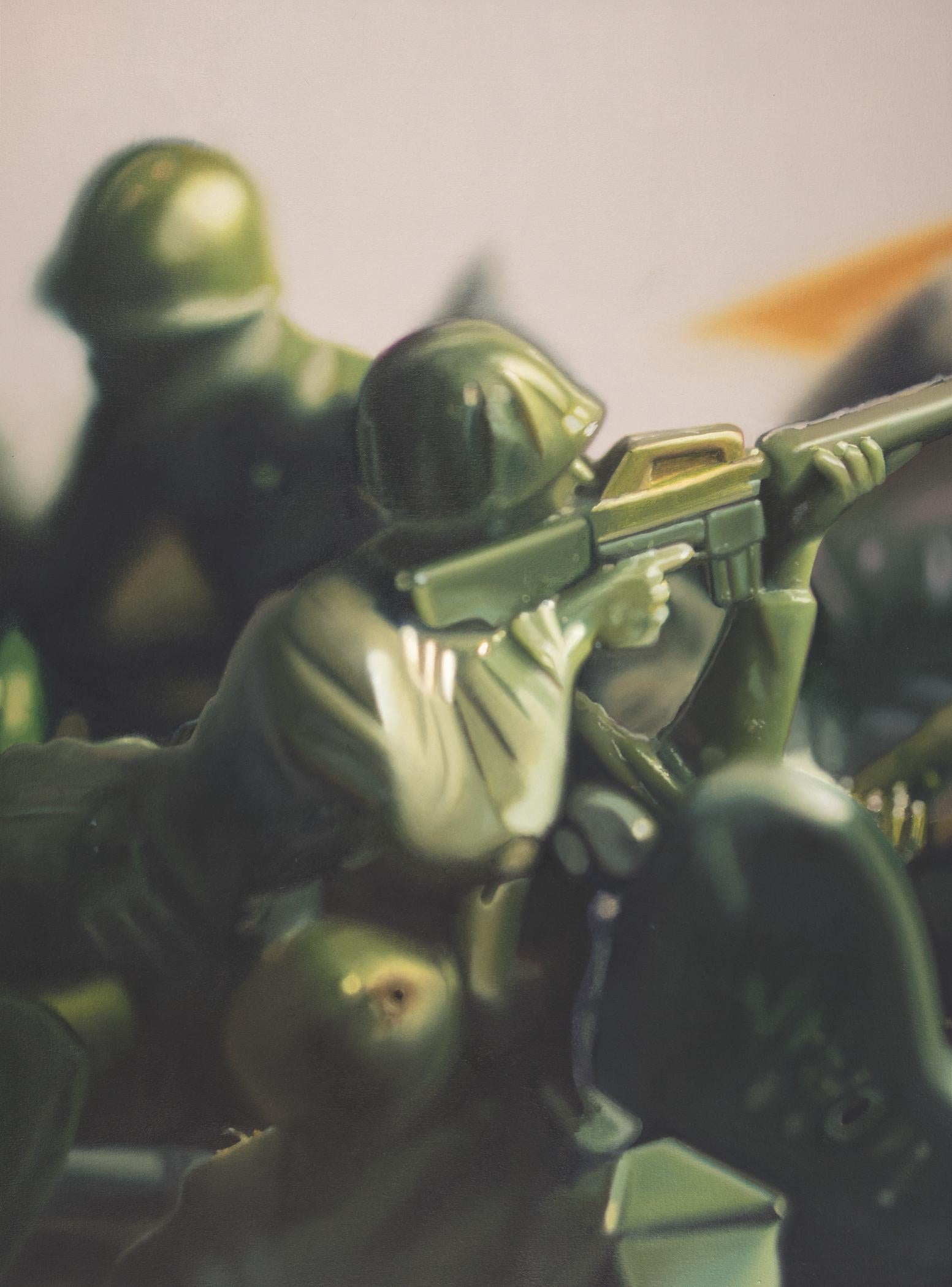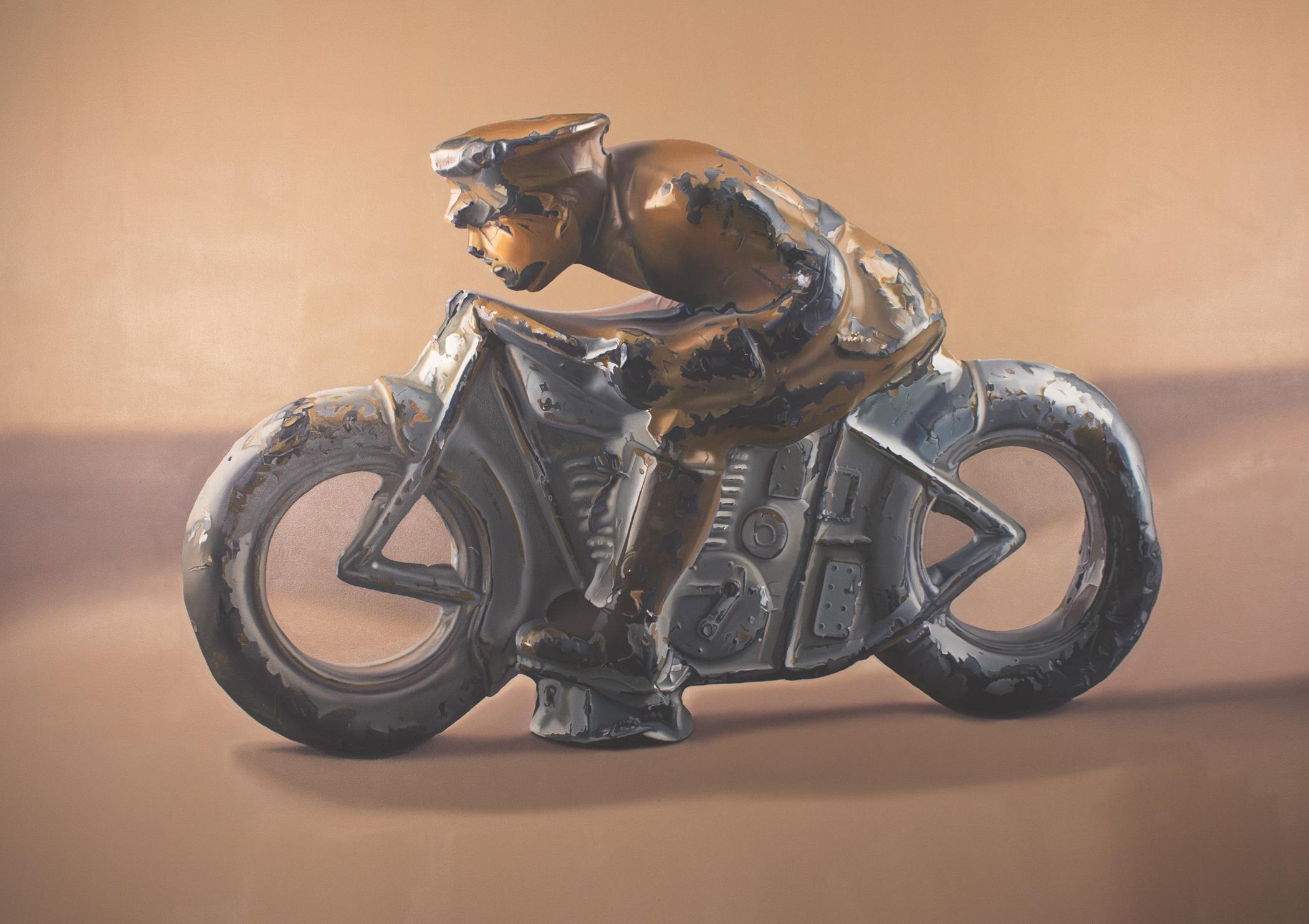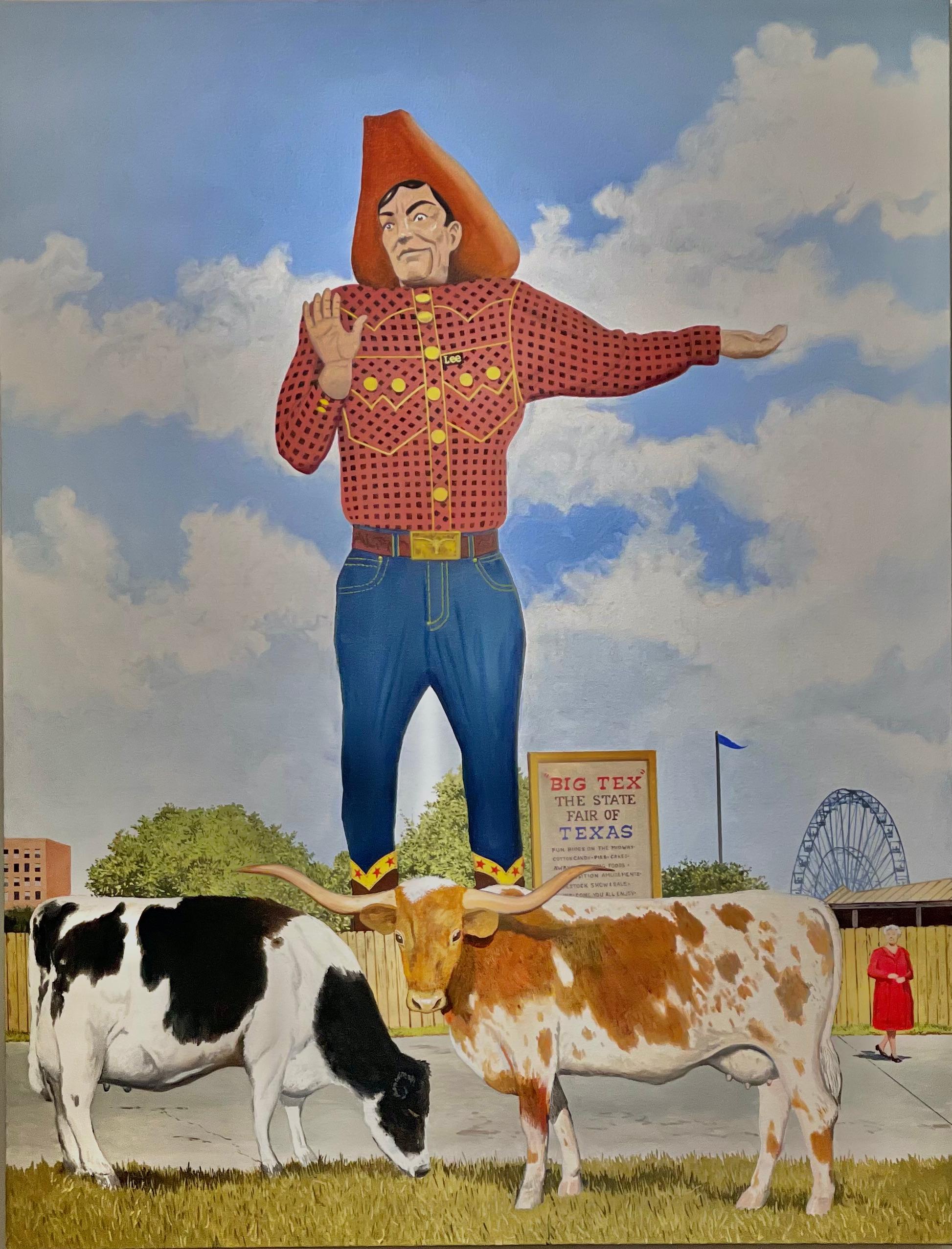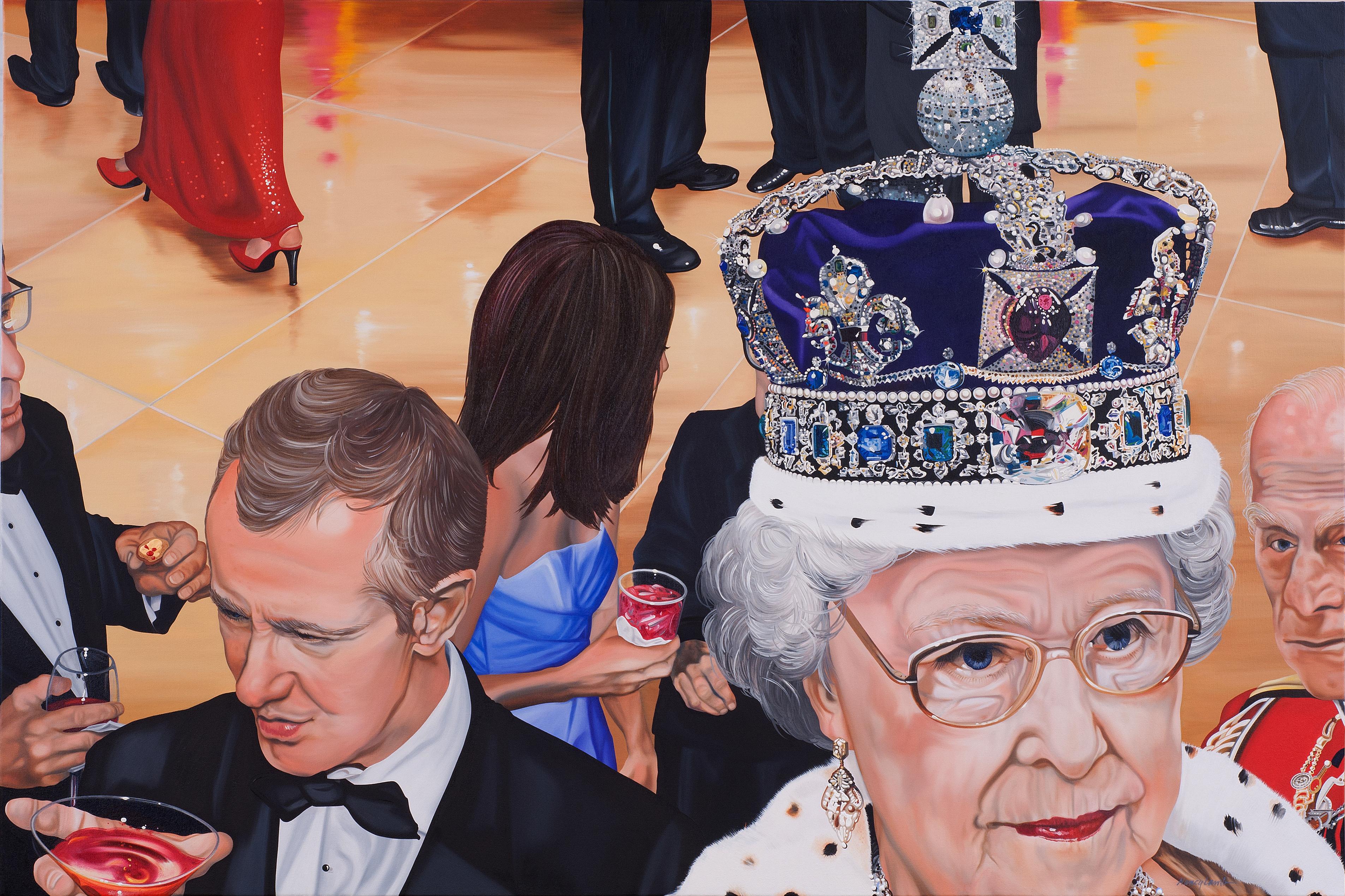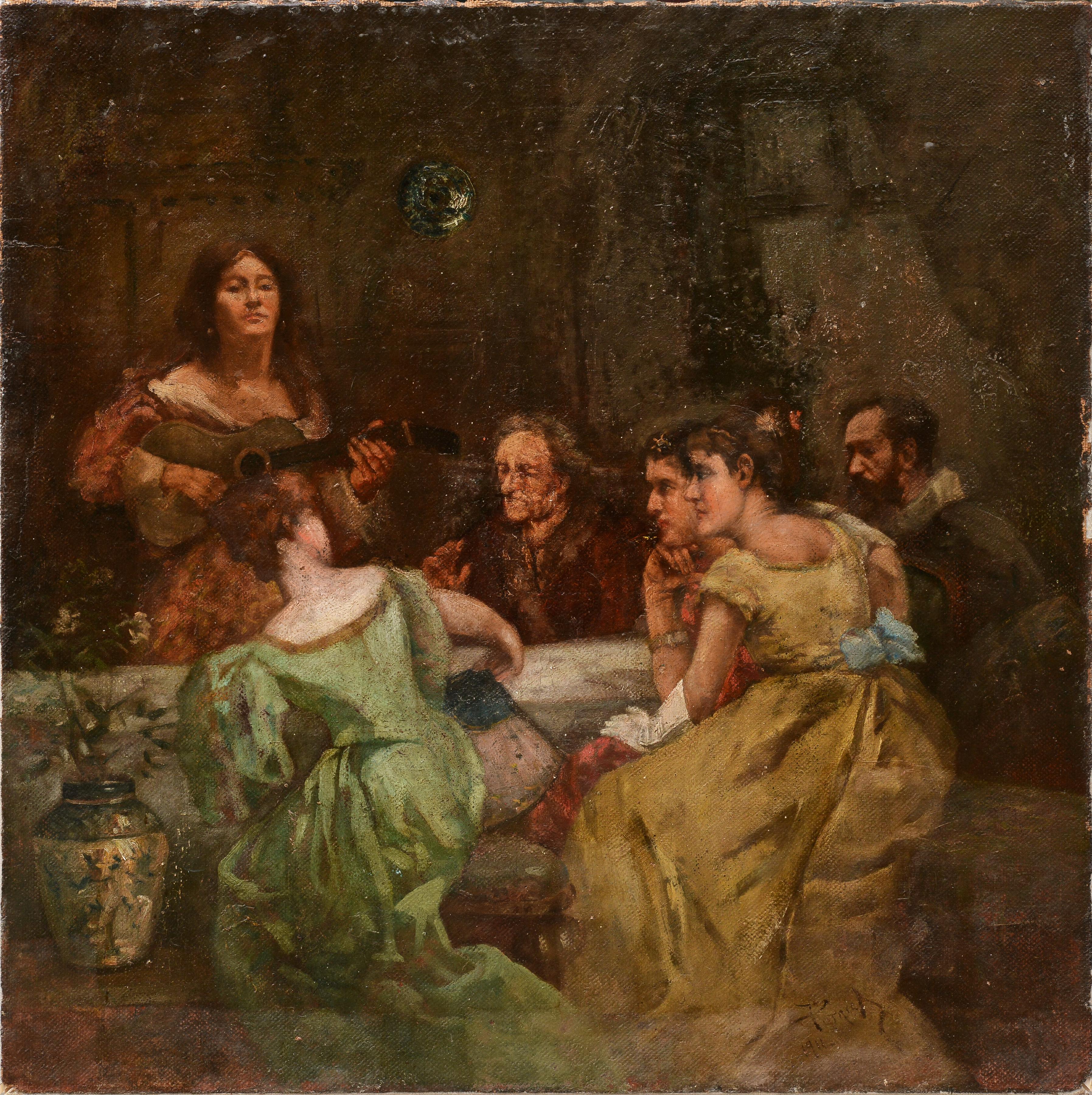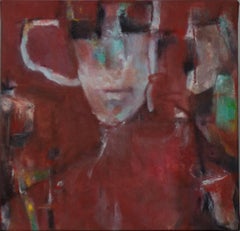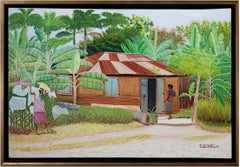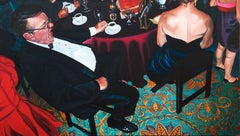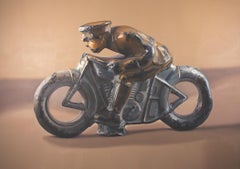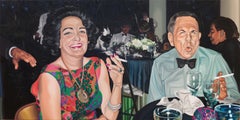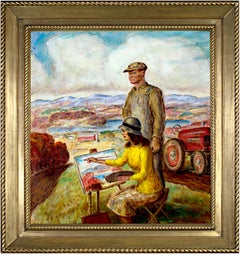
'Sketching Wisconsin' original oil painting signed by John Steuart Curry
View Similar Items
Want more images or videos?
Request additional images or videos from the seller
1 of 12
John Steuart Curry'Sketching Wisconsin' original oil painting signed by John Steuart Curry1946
1946
About the Item
- Creator:John Steuart Curry (1897-1946, American)
- Creation Year:1946
- Dimensions:Height: 39.75 in (100.97 cm)Width: 36.75 in (93.35 cm)Depth: 2.5 in (6.35 cm)
- Medium:
- Movement & Style:
- Period:
- Condition:
- Gallery Location:Milwaukee, WI
- Reference Number:Seller: 12694g1stDibs: LU60532956591
About the Seller
4.9
Platinum Seller
These expertly vetted sellers are 1stDibs' most experienced sellers and are rated highest by our customers.
Established in 1966
1stDibs seller since 2017
391 sales on 1stDibs
Typical response time: 1 hour
More From This SellerView All
- 'Sketching Wisconsin' original oil painting, SignedBy John Steuart CurryLocated in Milwaukee, WIJohn Steuart Curry "Sketching Wisconsin," 1946 oil on canvas 31.13 x 28 inches, canvas 39.75 x 36.75 x 2.5 inches, frame Signed and dated lower right Overall excellent condition Presented in a 24-karat gold leaf hand-carved wood frame John Steuart Curry (1897-1946) was an American regionalist painter active during the Great Depression and into World War II. He was born in Kansas on his family’s farm but went on to study art in Chicago, Paris and New York as young man. In Paris, he was exposed to the work of masters such as Peter Paul Rubens, Eugène Delacroix and Jacques-Louis David. As he matured, his work showed the influence of these masters, especially in his compositional decisions. Like the two other Midwestern regionalist artists that are most often grouped with him, Grant Wood (American, 1891-1942) and Thomas Hart Benton (American, 1889-1975), Curry was interested in representational works containing distinctly American subject matter. This was contrary to the popular art at the time, which was moving closer and closer to abstraction and individual expression. Sketching Wisconsin is an oil painting completed in 1946, the last year of John Steuart Curry’s life, during which time he was the artist-in-residence at the University of Wisconsin in Madison. The painting is significant in Curry’s body of work both as a very revealing self-portrait, and as a landscape that clearly and sensitively depicts the scenery of southern Wisconsin near Madison. It is also a portrait of the artist’s second wife, Kathleen Gould Curry, and is unique in that it contains a ‘picture within a picture,’ a compositional element that many early painting masters used to draw the eye of the viewer. This particular artwork adds a new twist to this theme: Curry’s wife is creating essentially the same painting the viewer is looking at when viewing Sketching Wisconsin. The triangular composition of the figures in the foreground immediately brings focus to a younger Curry, whose head penetrates the horizon line and whose gaze looks out towards the viewer. The eye then moves down to Mrs. Curry, who, seated on a folding stool and with her hand raised to paint the canvas on the easel before her, anchors the triangular composition. The shape is repeated in the legs of the stool and the easel. Behind the two figures, stripes of furrowed fields fall away gently down the hillside to a farmstead and small lake below. Beyond the lake, patches of field and forest rise and fall into the distance, and eventually give way to blue hills. Here, Curry has subverted the traditional artist’s self-portrait by portraying himself as a farmer first and an artist second. He rejects what he sees as an elitist art world of the East Coast and Europe. In this self-portrait he depicts himself without any pretense or the instruments of his profession and with a red tractor standing in the field behind him as if he was taking a break from the field work. Here, Curry’s wife symbolizes John Steuart Curry’s identity as an artist. Compared with a self-portrait of the artist completed a decade earlier, this work shows a marked departure from how the artist previously presented and viewed himself. In the earlier portrait, Curry depicted himself in the studio with brushes in hand, and with some of his more recognizable and successful canvases behind him. But in Sketching Wisconsin, Curry has taken himself out of the studio and into the field, indicating a shift in the artist’s self-conception. Sketching Wisconsin’s rural subject also expresses Curry’s populist ideals, that art could be relevant to anyone. This followed the broad educational objectives of UW’s artist-in-residence program. Curry was appointed to his position at the University of Wisconsin in 1937 and was the first person to hold any such position in the country, the purpose of which was to serve as an educational resource to the people of the state. He embraced his role at the University with zeal and not only opened the doors of his campus studio in the School of Agriculture to the community, but also spent a great deal of time traveling around the state of Wisconsin to visit rural artists who could benefit from his expertise. It was during his ten years in the program that Curry was able to put into practice his belief that art should be meaningful to the rural populace. However, during this time he also struggled with public criticism, as the dominant forces of the art market were moving away from representation. Perhaps it was Curry’s desire for public acceptance during the latter part of his career that caused him to portray himself as an Everyman in Sketching Wisconsin. Beyond its importance as a portrait of the artist, Sketching Wisconsin is also a detailed and sensitive landscape that shows us Curry’s deep personal connection to his environment. The landscape here can be compared to Wisconsin Landscape of 1938-39 (the Metropolitan Museum of Art), which presents a similar tableau of rolling hills with a patchwork of fields. Like Wisconsin Landscape, this is an incredibly detailed and expressive depiction of a place close to the artist’s heart. This expressive landscape is certainly the result of many hours spent sketching people, animals, weather conditions and topography of Wisconsin as Curry traveled around the state. The backdrop of undulating hills and the sweeping horizon, and the emotions evoked by it, are emphatically recognizable as the ‘driftless’ area of south-central Wisconsin. But while the Metropolitan’s Wisconsin Landscape conveys a sense of uncertainty or foreboding with its dramatic spring cloudscape and alternating bands of light and dark, Sketching Wisconsin has a warm and reflective mood. The colors of the foliage indicate that it is late summer and Curry seems to look out at the viewer approvingly, as if satisfied with the fertile ground surrounding him. The landscape in Sketching Wisconsin is also revealing of what became one of Curry’s passions while artist-in-residence at UW’s School of Agriculture – soil conservation. When Curry was a child in Kansas, he saw his father almost lose his farm and its soil to the erosion of The Dust Bowl. Therefore, he was very enthusiastic about ideas from UW’s School of Agriculture on soil conservation methods being used on Wisconsin farms. In Sketching Wisconsin, we see evidence of crop rotation methods in the terraced stripes of fields leading down the hillside away from the Curry’s and in how they alternate between cultivated and fallow fields. Overall, Sketching Wisconsin has a warm, reflective, and comfortably pastoral atmosphere, and the perceived shift in Curry’s self-image that is evident in the portrait is a positive one. After his rise to favor in the art world in the 1930’s, and then rejection from it due to the strong beliefs presented in his art, Curry is satisfied and proud to be farmer in this self-portrait. Curry suffered from high blood...Category
1940s American Realist Figurative Paintings
MaterialsOil, Canvas
- "Your Choice, " Oil on Canvas signed by Alayna RoseBy Alayna RoseLocated in Milwaukee, WI"Your Choice" is an original oil painting on canvas by Alayna Rose. The artist signed the painting in the lower left and signed and dated it on the back. This piece depicts a ghostly...Category
2010s Abstract Abstract Paintings
MaterialsCanvas, Oil
- "Two Country Village Women Outside Their House, " Oil on Canvas E. HyppoliteBy E. HyppoliteLocated in Milwaukee, WI"Two Country Village Women Outside Their House" is an original oil painting on canvas signed and dated in the lower right corner. It depicts two Haitian women working around their house. There is a variety of lush plants surrounding the house. 24 3/4" x 36" art 26 1/2" x 38 1/4" frame Framed to conservation standards in a floating frame with an brushed antique gold...Category
Early 2000s Figurative Paintings
MaterialsCanvas, Oil
- 1600s Baroque Spiritual Ghosts Supernatural Intense Figures Medieval Old MastersBy Abraham WIllemsensLocated in Milwaukee, WI"The Fortune Teller" is an original oil painting on canvas by Abraham Willemsens, Maitre aux Beguins (Master of the Hats). It depicts a fortune tell...Category
Mid-17th Century Old Masters Figurative Paintings
MaterialsOil, Canvas
- "Peruvian Folk Art Painting, " Oil on Canvas created in Peru circa 1900Located in Milwaukee, WIThis folk art oil painting was created by an unknown Peruvian artist. It depicts a man in a yellow costume with other, smaller figures surrounding him. Behind him is a church and ano...Category
Early 20th Century Folk Art Figurative Paintings
MaterialsCanvas, Oil
- "Nina Pastora (Shepherd Girl) -Puno, " Oil on Canvas signed by Abelardo VelazquezBy Abelardo Marquez VelazquezLocated in Milwaukee, WI"Nina Alfarera (Child Making Pottery) - Puno" is an original oil painting by Abelardo Marquez.It depicts a young girl holding a baby alpaca or llama. This painting was completed in b...Category
1990s Contemporary Figurative Paintings
MaterialsCanvas, Oil
You May Also Like
- Contemporary Quirky Portrait of Party People with Incredible Carpet DetailBy Nancy LambLocated in Fort Worth, TXThe Menthol Mood, 2009, Nancy Lamb, Oil on canvas, 48 x 85" Nancy Lamb (American, born 1956), sculptor and painter. Formally trained at Texas Christian Uni...Category
2010s American Realist Figurative Paintings
MaterialsCanvas, Acrylic, Oil
- Contemporary American Oil of an Antique/Vintage Collectable Toy RacerLocated in Fort Worth, TXLead Foot, 2017 John Hartley discovered his life's passion while growing up in Piqua, Ohio. Encouraged to develop his talents in an academic environment...Category
2010s American Realist Still-life Paintings
MaterialsOil, Canvas, Acrylic
- Large Contemporary Oil Portrait of Party People Smoking, Laughing, and DrinkingBy Nancy LambLocated in Fort Worth, TXThe Menthol Mood, 2009, Nancy Lamb, Oil on canvas, 48 x 85" Nancy Lamb (American, born 1956), sculptor and painter. Formally trained at Texas Christian Un...Category
2010s American Realist Figurative Paintings
MaterialsCanvas, Acrylic, Oil
- Contemporary American Oil Painting with Big Tex, Cowboy, and Texas State FairLocated in Fort Worth, TX'Loose Cows,' 2021 by Daniel Blagg. Oil on canvas. 55 x 42." $19,000. Contemporary American Oil Painting with Big Tex, Cowboy, and Texas State Fair. Nothing s...Category
21st Century and Contemporary American Realist Figurative Paintings
MaterialsCanvas, Paint, Oil
- Contemporary Oil of Vintage/Antique Fighter Jet Toys for Army Men or G.I JoeLocated in Fort Worth, TXBMIC, 2017 John Hartley discovered his life's passion while growing up in Piqua, Ohio. Encouraged to develop his talents in an academic environment, he m...Category
2010s American Realist Still-life Paintings
MaterialsCanvas, Acrylic, Oil
- Contemporary Fabulous Portrait of The Queen with Detailed Royal Crown/JewelsBy Nancy LambLocated in Fort Worth, TXNancy Lamb (American, born 1956), sculptor and painter. Formally trained at Texas Christian University and the Fort Worth Museum of Science and History, whe...Category
2010s American Realist Figurative Paintings
MaterialsCanvas, Acrylic, Oil
Recently Viewed
View AllMore Ways To Browse
Sketches Of Hands
Original Picture Signed
Small Original Oil Painting
Signed Sketch Framed
Sketch Light
Wisconsin Painting
Sketch Art Paris
Paris Sketch Art
John Fields
Blue Sketch
Small Art Sketches
Framed Art Signed Gold Wood Frame
Vintage Hours Sign
John Grant
Rural America Painting
John Golding Painting
Vintage Blue John
Original Oil Painting War


